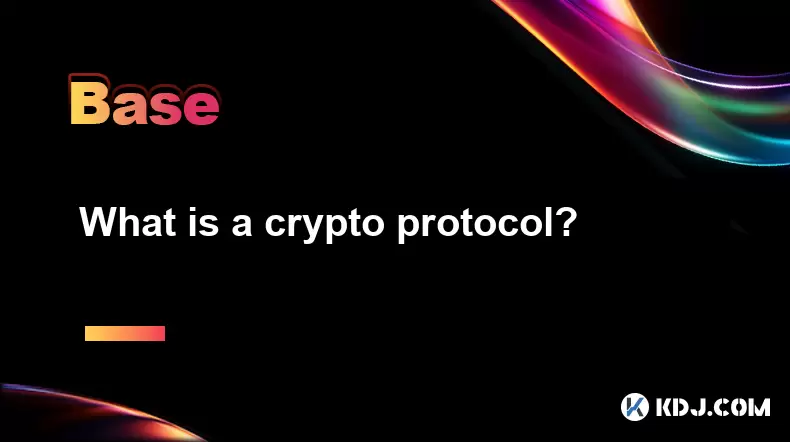-
 Bitcoin
Bitcoin $108,250.0992
0.11% -
 Ethereum
Ethereum $2,515.9404
0.03% -
 Tether USDt
Tether USDt $1.0003
0.00% -
 XRP
XRP $2.2166
-0.19% -
 BNB
BNB $656.5904
0.29% -
 Solana
Solana $147.4122
-0.58% -
 USDC
USDC $1.0000
-0.01% -
 TRON
TRON $0.2830
0.06% -
 Dogecoin
Dogecoin $0.1641
0.27% -
 Cardano
Cardano $0.5739
-0.19% -
 Hyperliquid
Hyperliquid $39.1463
-0.11% -
 Sui
Sui $2.8882
-0.02% -
 Bitcoin Cash
Bitcoin Cash $487.6428
0.31% -
 Chainlink
Chainlink $13.2097
0.07% -
 UNUS SED LEO
UNUS SED LEO $9.0308
0.10% -
 Avalanche
Avalanche $17.8608
0.13% -
 Stellar
Stellar $0.2379
-0.06% -
 Toncoin
Toncoin $2.7400
-0.39% -
 Shiba Inu
Shiba Inu $0.0...01144
-0.36% -
 Litecoin
Litecoin $87.5467
0.66% -
 Hedera
Hedera $0.1538
0.22% -
 Monero
Monero $315.5479
0.36% -
 Dai
Dai $1.0000
0.00% -
 Polkadot
Polkadot $3.3523
-0.71% -
 Ethena USDe
Ethena USDe $1.0003
0.01% -
 Bitget Token
Bitget Token $4.3960
-1.03% -
 Uniswap
Uniswap $7.2663
4.19% -
 Aave
Aave $272.8619
2.04% -
 Pepe
Pepe $0.0...09676
-0.18% -
 Pi
Pi $0.4586
-2.87%
What is a crypto protocol?
A crypto protocol establishes the rules for secure, decentralized transactions, using consensus mechanisms like PoW or PoS to validate data and enable trustless interactions across a blockchain network.
Jul 06, 2025 at 07:49 am

Understanding the Core Concept of a Crypto Protocol
A crypto protocol refers to a set of rules and procedures that govern how data is transmitted, verified, and secured within a blockchain or decentralized network. These protocols are foundational in ensuring that all participants in a distributed system agree on the validity of transactions without relying on a central authority. At their core, crypto protocols define consensus mechanisms, cryptographic algorithms, and communication standards.
In most blockchain systems, such as Bitcoin or Ethereum, the crypto protocol dictates how nodes interact with each other, how blocks are validated, and how new tokens are minted or rewarded. For example, Bitcoin's protocol uses Proof-of-Work (PoW) to secure its network, while Ethereum has transitioned to Proof-of-Stake (PoS) to achieve consensus more efficiently.
The Role of Consensus Mechanisms in Crypto Protocols
Consensus mechanisms are integral components of any crypto protocol, serving as the method by which network participants reach agreement on the state of the ledger. Popular consensus models include:
- Proof-of-Work (PoW): Requires miners to solve complex mathematical puzzles to validate transactions and create new blocks.
- Proof-of-Stake (PoS): Selects validators based on the number of coins they hold and are willing to "stake" as collateral.
- Delegated Proof-of-Stake (DPoS): Allows token holders to vote for delegates who validate transactions on their behalf.
Each of these consensus methods operates under specific rules embedded within the crypto protocol, ensuring fairness, security, and decentralization across the network.
How Smart Contracts Extend Crypto Protocols
Smart contracts are self-executing agreements with the terms directly written into code. They extend the functionality of crypto protocols by enabling programmable money and automated operations. Platforms like Ethereum use smart contracts to facilitate decentralized applications (dApps), allowing developers to build on top of existing crypto protocols without needing to create a new blockchain from scratch.
For instance, when a user interacts with a decentralized finance (DeFi) application, they're essentially engaging with a crypto protocol that governs lending, borrowing, trading, or yield farming. These interactions are governed by immutable rules encoded in smart contracts, which operate transparently and autonomously.
Security Measures Embedded in Crypto Protocols
Security is paramount in any crypto protocol, and multiple layers of encryption and verification are employed to protect against fraud, hacking, and manipulation. Public-key cryptography ensures that only the rightful owner can access their digital assets, while hashing functions maintain the integrity of transaction data stored on the blockchain.
Additionally, many crypto protocols implement multi-signature (multi-sig) wallets, threshold signatures, and zero-knowledge proofs to enhance privacy and prevent unauthorized access. These features are hard-coded into the protocol layer and cannot be altered without community consensus or a hard fork.
Differentiating Between Layer 1 and Layer 2 Crypto Protocols
Crypto protocols can be categorized into Layer 1 and Layer 2 solutions depending on where they operate within the blockchain stack.
- Layer 1 protocols form the base layer of a blockchain and include the consensus mechanism, block validation rules, and native cryptocurrency. Examples include Bitcoin, Ethereum, and Solana.
- Layer 2 protocols are built on top of Layer 1 chains to improve scalability and efficiency. Examples include the Lightning Network for Bitcoin and Optimism or Arbitrum for Ethereum.
These distinctions help users understand how different crypto protocols interoperate and contribute to the broader ecosystem of decentralized technologies.
Frequently Asked Questions (FAQ)
Q: Can a crypto protocol be changed once it’s deployed?
Yes, but changing a crypto protocol typically requires a hard fork, which involves updating the software on all participating nodes. This process demands community approval and coordination among developers, miners, and users.
Q: How do crypto protocols ensure transparency?
Through open-source code and public ledgers, crypto protocols allow anyone to audit transactions and verify the system's integrity. This openness fosters trust and reduces reliance on centralized institutions.
Q: Are all blockchains powered by crypto protocols?
Yes, every blockchain relies on an underlying crypto protocol to define its operational rules, including transaction validation, node behavior, and network governance.
Q: What happens if there's a flaw in a crypto protocol?
Flaws in a crypto protocol can lead to vulnerabilities, potentially resulting in exploits or loss of funds. Developers often release updates or patches through forks to address issues and strengthen the system.
Disclaimer:info@kdj.com
The information provided is not trading advice. kdj.com does not assume any responsibility for any investments made based on the information provided in this article. Cryptocurrencies are highly volatile and it is highly recommended that you invest with caution after thorough research!
If you believe that the content used on this website infringes your copyright, please contact us immediately (info@kdj.com) and we will delete it promptly.
- Litecoin Breakout Watch: What Traders Need to Know Now
- 2025-07-06 16:50:13
- Bitcoin, Solana, Ethereum: Decoding the Latest Buzz on the Blockchain
- 2025-07-06 16:50:13
- Widnes Resident's 50p Could Be Your Ticket to Easy Street: Rare Coin Mania!
- 2025-07-06 16:55:13
- Bitcoin, Solaris Presale, and Token Rewards: What's the Buzz?
- 2025-07-06 16:55:13
- Ethereum Under Pressure: Price Drop Amid Global Uncertainties
- 2025-07-06 17:00:13
- XRP, SEC Case, and Prosperity: A New Era for XRP Holders?
- 2025-07-06 17:10:13
Related knowledge

What is a user-generated content (UGC) NFT platform?
Jul 04,2025 at 01:49pm
Understanding the Concept of a UGC NFT PlatformA user-generated content (UGC) NFT platform is a digital marketplace or ecosystem where users can create, mint, and trade non-fungible tokens (NFTs) that represent ownership of original digital content they produce. Unlike traditional NFT platforms where creators often include professional artists or develo...

What is composability in DeFi?
Jul 06,2025 at 04:07pm
Understanding the Concept of Composability in DeFiComposability in DeFi refers to the ability of decentralized finance protocols and smart contracts to interact seamlessly with one another, much like building blocks that can be combined in various ways to create new financial products and services. This concept is a core innovation within the DeFi ecosy...

What is a "crypto primitive"?
Jul 05,2025 at 10:14pm
Defining the Concept of a Crypto PrimitiveIn the context of blockchain and cryptocurrency, a crypto primitive refers to a fundamental building block or foundational element used in constructing decentralized systems and cryptographic protocols. These primitives are essential for enabling secure transactions, consensus mechanisms, and smart contract exec...

What is a fair launch?
Jul 05,2025 at 07:31pm
Understanding the Concept of a Fair LaunchA fair launch refers to the release of a cryptocurrency or blockchain project in a manner that ensures equal opportunity for all participants. Unlike traditional token launches, which may involve private sales, venture capital funding, or pre-mining, a fair launch emphasizes transparency and decentralization. In...

What is a cliff in tokenomics?
Jul 05,2025 at 07:18pm
Understanding the Concept of a Cliff in TokenomicsIn the world of cryptocurrency and blockchain, tokenomics plays a pivotal role in shaping the economic behavior of a digital asset. One of the key mechanisms used to manage token distribution is known as a cliff. This concept is commonly applied in projects that include vesting schedules for tokens, espe...

What is a token generation event (TGE)?
Jul 04,2025 at 07:14am
Understanding the Basics of a Token Generation Event (TGE)A Token Generation Event (TGE) refers to the process through which a blockchain project creates and distributes its native tokens to investors, participants, or stakeholders. This event is often associated with new cryptocurrency projects launching on platforms like Ethereum, Binance Smart Chain,...

What is a user-generated content (UGC) NFT platform?
Jul 04,2025 at 01:49pm
Understanding the Concept of a UGC NFT PlatformA user-generated content (UGC) NFT platform is a digital marketplace or ecosystem where users can create, mint, and trade non-fungible tokens (NFTs) that represent ownership of original digital content they produce. Unlike traditional NFT platforms where creators often include professional artists or develo...

What is composability in DeFi?
Jul 06,2025 at 04:07pm
Understanding the Concept of Composability in DeFiComposability in DeFi refers to the ability of decentralized finance protocols and smart contracts to interact seamlessly with one another, much like building blocks that can be combined in various ways to create new financial products and services. This concept is a core innovation within the DeFi ecosy...

What is a "crypto primitive"?
Jul 05,2025 at 10:14pm
Defining the Concept of a Crypto PrimitiveIn the context of blockchain and cryptocurrency, a crypto primitive refers to a fundamental building block or foundational element used in constructing decentralized systems and cryptographic protocols. These primitives are essential for enabling secure transactions, consensus mechanisms, and smart contract exec...

What is a fair launch?
Jul 05,2025 at 07:31pm
Understanding the Concept of a Fair LaunchA fair launch refers to the release of a cryptocurrency or blockchain project in a manner that ensures equal opportunity for all participants. Unlike traditional token launches, which may involve private sales, venture capital funding, or pre-mining, a fair launch emphasizes transparency and decentralization. In...

What is a cliff in tokenomics?
Jul 05,2025 at 07:18pm
Understanding the Concept of a Cliff in TokenomicsIn the world of cryptocurrency and blockchain, tokenomics plays a pivotal role in shaping the economic behavior of a digital asset. One of the key mechanisms used to manage token distribution is known as a cliff. This concept is commonly applied in projects that include vesting schedules for tokens, espe...

What is a token generation event (TGE)?
Jul 04,2025 at 07:14am
Understanding the Basics of a Token Generation Event (TGE)A Token Generation Event (TGE) refers to the process through which a blockchain project creates and distributes its native tokens to investors, participants, or stakeholders. This event is often associated with new cryptocurrency projects launching on platforms like Ethereum, Binance Smart Chain,...
See all articles

























































































